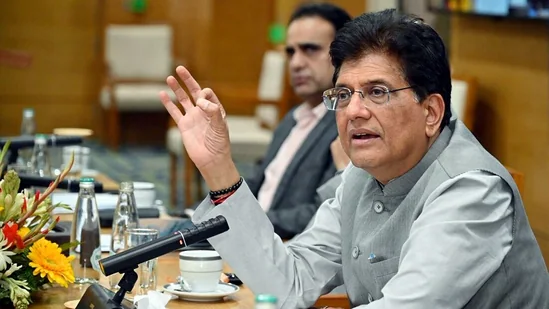India’s Digital Diplomacy and Pilgrimage Diplomacy: E‑Visas Soar, Kartarpur Corridor Suspended
- MGMMTeam

- Aug 1
- 4 min read
In a detailed response to the Rajya Sabha, the Ministry of External Affairs (MEA) shared that India has issued over 96.44 lakh e‑visas between January 2020 and July 20, 2025. This massive number, reflecting both digital transformation and diplomatic expansion, signals India’s growing emphasis on facilitating international tourism, business, and spiritual travel through streamlined online processes.

Expanding Access to India Through E‑Visas
Since the introduction of the e‑visa facility, India has steadily expanded its reach. In 2020, citizens of 171 countries were eligible for e‑visas. As of July 2025, that number has increased to 181. This expansion demonstrates New Delhi’s effort to position India as a globally accessible hub, open to cultural exchange, medical tourism, investment, and pilgrimages. According to the MEA, the total number of e‑visas issued in this five-year period touched nearly 9.65 million, making it one of the world’s largest digital visa networks.
This growth is part of a broader initiative to enhance diplomatic convenience and improve India’s global visibility. Despite temporary suspensions to some countries during the COVID-19 pandemic and political tensions in early 2021–22, the e‑visa policy has been consistently broadened. Newer categories, including e‑medical, e‑Ayush, and e‑business visas, have made the programme more inclusive.
India’s Religious Diplomacy: Facilitating Pilgrimages
India’s Ministry of External Affairs also addressed the role of pilgrimage diplomacy in fostering cross-border spiritual ties. The country has been facilitating religious travel through formal agreements, particularly the Protocol on Visits to Religious Shrines signed with Pakistan. One of the most notable efforts in this regard has been the Kartarpur Corridor, inaugurated on November 9, 2019. This corridor allowed Indian Sikh pilgrims visa-free access to the Gurdwara Darbar Sahib in Pakistan, considered one of the holiest sites in Sikhism.
Over 400,000 Indian pilgrims made the sacred journey using the Kartarpur Corridor until its recent closure. This initiative had been hailed as a symbol of peace and cultural respect, even amid strained diplomatic relations between India and Pakistan.
However, in the wake of Operation Sindoor, the corridor has been suspended indefinitely due to growing security threats. Launched after the Pahalgam terror attack in April 2025 that killed 26 people, Operation Sindoor was a series of precise missile strikes targeting terror camps in Pakistan and Pakistan-occupied Kashmir. In the aftermath, Indian authorities decided to halt pilgrim passage across the corridor, citing safety concerns on both sides of the border.
Indian Diaspora: A Global Footprint Without Classification
As of January 2025, India’s global diaspora remains one of the largest in the world. There are approximately 17.17 million Non‑Resident Indians (NRIs) and 17.18 million Persons of Indian Origin (PIOs) across different continents. Of this population, about 1.88 million are students pursuing higher education abroad.
Despite the significance of this demographic, the government clarified that it has not categorized the diaspora by profession or skillset. This lack of segmentation, while preserving privacy, also raises questions about how diaspora potential can be mapped and engaged in nation-building or soft-power diplomacy.
Labour Migration and Emigration Oversight
Between January 2020 and June 30, 2025, over 1.6 million Indian workers holding Emigration Check Required (ECR) passports were granted Emigration Clearance to take up employment in countries designated under the ECR category. These countries include several Gulf nations where demand for semi-skilled and unskilled Indian workers remains high.
India’s emigration regime continues to function under the principle of worker safety and contractual clarity. However, challenges remain in ensuring comprehensive post-departure welfare and protection for workers in conflict-prone or diplomatically sensitive regions.
Uncertain Future of the Kartarpur Corridor
The suspension of the Kartarpur Corridor has not only halted a sacred journey for thousands but has also stirred concerns among Sikh religious bodies and political observers. The Akal Takht and the Shiromani Gurdwara Parbandhak Committee (SGPC) have publicly appealed to both governments for the corridor’s reopening. They argue that spiritual rights must transcend political tension, especially since the route served as a major cultural bridge between communities divided by partition.
Reports have also surfaced alleging that the corridor in Pakistan is now under the management of military-controlled entities like the Project Management Unit (PMU) and possibly the ISI, adding to India's suspicions. Authorities remain wary of potential intelligence threats, infiltration risks, and propaganda channels that could misuse the otherwise peaceful corridor.
Despite recent diplomatic assurances that Operation Sindoor is “on hold”, there has been no official indication from either side on when or whether the corridor will reopen. The situation has left many Sikh pilgrims and border-state communities in a state of uncertainty.
Conclusion: Balancing Openness with Security
India’s dual strategy of digital ease through e‑visas and cultural connection via religious routes like Kartarpur is emblematic of a broader vision—one that seeks to make the country more accessible while retaining tight control over national security. The expansion of e‑visa access and the high uptake show promise for future engagement in tourism, education, business, and diaspora outreach. However, the suspension of the Kartarpur Corridor reveals the persistent vulnerability of soft diplomacy in regions plagued by cross-border terrorism.
As the country stands at this intersection of opportunity and caution, the coming months will test India’s ability to balance open-door policies with its commitment to safeguarding citizens and pilgrims alike.
(Sources: Firstpost, Hindustan Times, Economic Times)




Comments